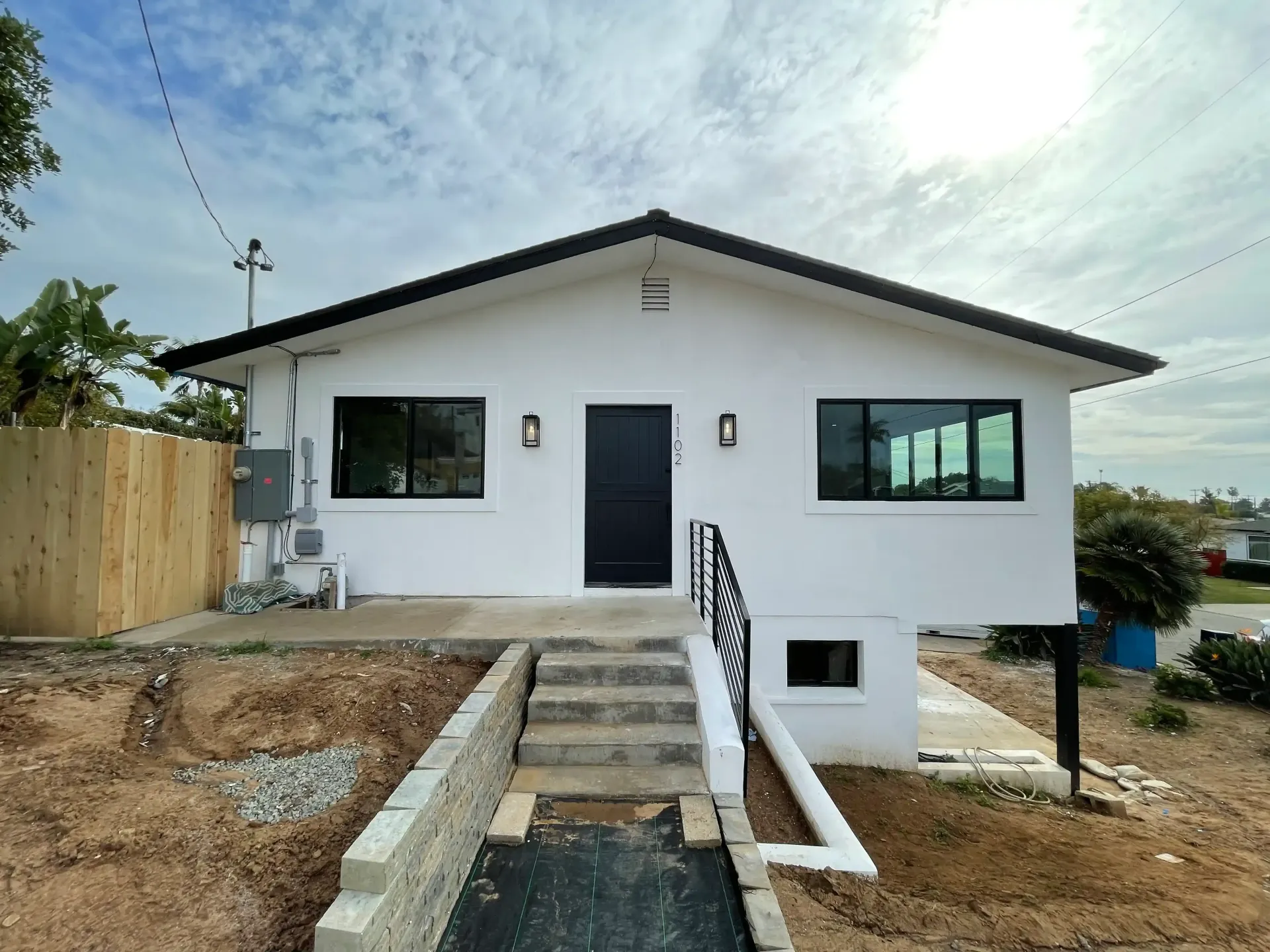How to Plan a Successful Home Addition: A Step-by-Step Guide
Expanding your living space with a home addition is an exciting and transformative project. It allows you to tailor your home to your evolving needs, whether it's for added living space, a new bedroom, an expanded kitchen, or a dedicated home office. However, the success of a home addition relies on meticulous planning and execution. In this comprehensive guide, we'll walk you through each step of the process, from the initial idea to the final construction, ensuring that your project is not just a success but a realization of your dream home.

Step 1: Define Your Goals and Needs
Before delving into the technical aspects of planning a home addition, it's essential to define your goals and needs clearly. Start by asking yourself why you want to undertake a home addition. Are you looking to accommodate a growing family, create a more functional living space, or enhance your home's overall value? Your goals will set the direction for the entire project and help you make informed decisions as you proceed.
Additionally, consider your budget for the project. While it's essential to be realistic about your budget, it's equally important to factor in contingencies for unexpected expenses that may arise during the construction process.
Lastly, reflect on any specific design preferences or architectural styles you'd like to incorporate into your home addition. Your project should not only serve your functional needs but also align with your aesthetic vision.
Step 2: Determine Feasibility
Once your goals are clearly defined, the next step is to assess the feasibility of your home addition project. This includes a comprehensive evaluation of local zoning laws, building codes, and property restrictions. Consulting with a local architect or contractor with a deep understanding of these regulations is often necessary to ensure your project's compliance.
In addition, assess whether your home's existing foundation can support the added load from the new construction. If your home addition involves a significant increase in square footage or the addition of upper floors, you may need to reinforce your foundation to ensure structural integrity.
Furthermore, examine the feasibility of extending utility connections to the new space. This includes electrical, plumbing, and HVAC systems, which must be integrated seamlessly into your home addition to ensure it's fully functional and comfortable.
Step 3: Create a Detailed Design
With a clear understanding of your goals and the project's feasibility, it's time to engage a professional architect or designer to create a detailed design for your home addition. A well-thought-out design is the cornerstone of a successful project, ensuring that your new space is both functional and aesthetically pleasing.
During the design phase, architectural plans are developed, specifying all aspects of the addition, from its layout and dimensions to the materials to be used. This phase is where your vision takes shape and becomes a tangible plan. A detailed design also enables accurate cost estimates, which are crucial for budgeting.
Keep in mind that your design should aim to seamlessly integrate the new addition with the existing structure, maintaining the overall harmony and style of your home. Whether you're considering a contemporary addition, a traditional extension, or a custom architectural style, your design professional will work with you to achieve the desired look and feel.
Step 4: Obtain Necessary Permits
Before you can break ground on your home addition, you must obtain the necessary permits from your local building department. The permitting process typically includes two key elements: building permits and zoning variances. This is a critical step in ensuring that your project complies with local regulations and that it meets safety and structural requirements.
Building permits grant you the legal permission to construct the addition, and they are essential for meeting building codes. These codes specify the standards that must be adhered to during construction, ensuring structural integrity, safety, and compliance with electrical, plumbing, and other essential systems.
Zoning variances, on the other hand, are permissions granted to deviate from specific local zoning regulations. These variances are necessary if your project does not conform to existing zoning laws, such as setbacks, height restrictions, or land use.
It's important to note that the permitting process can be time-consuming, with approval timelines varying based on your location and the complexity of your project. Starting the permitting process as early as possible is advisable to prevent unnecessary project delays.
Step 5: Set a Realistic Budget
An accurate and realistic budget is essential for the success of your home addition project. Setting a budget involves evaluating all potential costs, from design fees and permits to materials, labor, and contingencies for unexpected expenses. A reliable budget will be your guiding financial document throughout the project.
To establish a budget, consider the following factors:
- Design and architectural fees: These expenses cover the professional services provided by your architect or designer for creating your addition's design.
- Permit costs: Include all fees associated with obtaining the necessary building permits and zoning variances.
- Materials: Estimate the cost of all construction materials, including lumber, insulation, roofing, siding, flooring, and finishes.
- Labor: This category covers the labor costs of all the professionals and tradespeople involved in your project, such as carpenters, electricians, plumbers, and contractors.
- Contingencies: Budget for unforeseen expenses that may arise during construction, typically around 10-15% of your total project cost.
Creating an accurate budget is a collaborative effort between you and your contractor or construction professional. They can provide you with detailed cost estimates based on your design and project goals. Once you've established a budget, it's essential to stick to it throughout the project to avoid overspending.
Step 6: Select a Qualified Contractor
Choosing the right contractor is one of the most crucial decisions in the home addition process. Your contractor will be responsible for executing your project according to your design, budget, and timeline. When selecting a contractor, consider the following factors:
- Licensing and Experience: Verify that the contractor holds the necessary licenses and certifications to perform residential construction in your area. Experience in home additions is a significant advantage.
- Reputation and References: Research the contractor's reputation by checking online reviews and asking for references from past clients. Contact these references to gain insights into the contractor's work quality, communication, and professionalism.
- Insurance: Ensure that the contractor has proper insurance coverage, including liability and workers' compensation. This protects you from liability in case of accidents or damage during construction.
- Detailed Quotes: Request detailed quotes from multiple contractors. While price is an important factor, also consider the thoroughness of the quotes, including itemized costs and timelines.
- Compatibility: Choose a contractor with whom you have good rapport and effective communication. Your contractor will be your partner throughout the project, so a positive working relationship is key.
Step 7: Project Management and Timeline
Once you've selected a qualified contractor, it's time to develop a project management plan and timeline. Effective project management is essential to ensure that your home addition proceeds smoothly, stays within budget, and meets the established schedule.
Key elements of project management include:
- Scope of Work: Clearly define the scope of work, outlining all tasks and responsibilities, from demolition and excavation to framing, electrical, plumbing, and finishing.
- Project Milestones: Identify specific project milestones and critical deadlines. This helps you track progress and ensures that the project stays on schedule.
- Timeline: Create a comprehensive project timeline, specifying when each phase of construction will take place and how long it is expected to last.
- Communication: Maintain open and regular communication with your contractor. Scheduled site visits and updates help ensure that the project aligns with your vision and quality standards.
A well-structured project management plan is your roadmap for success. By carefully monitoring progress and addressing any issues promptly, you can maintain the project's momentum and quality throughout the construction phase.
Step 8: Construction and Quality Control
With all the preliminary planning in place, the construction phase can begin. Construction is the tangible realization of your vision, where your home addition takes shape. To ensure a successful construction phase, consider the following aspects:
- Site Safety: Prioritize safety during construction by ensuring that the work site is safe for workers and visitors. This includes following safety regulations, using appropriate safety equipment, and securing the work area.
- Regular Inspections: Conduct regular site inspections to assess the quality of work and adherence to the project plan. Ensure that the construction is in line with the design and quality standards.
- Material Selection: Verify that the materials being used are of the specified quality and in accordance with the design. High-quality materials are essential for the longevity and durability of your home addition.
- Effective Communication: Maintain open and consistent communication with your contractor. Address any concerns or changes promptly to avoid misunderstandings and ensure that the project remains on track.
By paying attention to these details during construction, you can help ensure the quality, safety, and timely completion of your home addition.
Step 9: Final Inspections and Approvals
Once construction is complete, your local building department will conduct final inspections to verify that the home addition meets all building codes and regulations. These inspections are critical for confirming that your project is safe and structurally sound. Upon receiving the approval from the building department, you can officially occupy and enjoy your new space.
Step 10: Post-Construction Evaluation
After your home addition is complete and you've had the opportunity to enjoy it, take some time to reflect on the entire process. A post-construction evaluation can help you gain valuable insights into what went well and what could be improved for future home improvement projects. Consider aspects such as the efficiency of the project management, the quality of work, and your overall satisfaction with the results.
By conducting a thoughtful post-construction evaluation, you can enhance your ability to make informed decisions and achieve even greater success in future home addition or renovation projects.
Conclusion
Planning and executing a successful home addition is a multifaceted and rewarding process that requires meticulous attention to detail and a comprehensive understanding of the steps involved. By following this step-by-step guide, you can ensure that your home addition project proceeds smoothly, stays within budget, and results in a valuable addition to your home.
As you embark on your journey to expand and enhance your living space, it's crucial to collaborate with experienced professionals who can bring your vision to life. At Solstice Building Group, we understand the intricacies of home addition projects and are dedicated to providing the expertise and services needed to make your dream home a reality. Our comprehensive range of services includes:
- Architectural Design: Our team of skilled architects and designers will work closely with you to create a detailed and personalized design for your home addition, ensuring that it aligns with your vision and lifestyle.
- Permit Acquisition: Navigating the complexities of permits and approvals can be a daunting task. We have the knowledge and experience to help you secure the necessary permits efficiently, ensuring your project complies with local regulations.
- Budget Management: We understand the importance of sticking to your budget. Our experts will provide detailed cost estimates and help you manage your budget effectively to prevent unexpected financial surprises.
- Quality Construction: Solstice Building Group takes pride in delivering high-quality construction, from the foundation to the finishing touches. We maintain strict standards to ensure that your home addition is not only aesthetically pleasing but also built to last.
- Project Management: Our dedicated project managers will oversee every aspect of your home addition, from coordinating subcontractors to keeping you informed about progress. This ensures that the project stays on schedule and aligns with your goals.
- Post-Construction Evaluation: After the completion of your home addition, we encourage you to evaluate the results and provide feedback. Your satisfaction and feedback are invaluable to us as we strive for continuous improvement in our services.
Collaborating with Solstice Building Group means having a trusted partner by your side throughout your home addition journey. We're committed to turning your aspirations into a successful and rewarding reality. Your expanded living space will not only enhance your home's functionality but also add significant value and comfort to your life.
As you embark on your home addition project, we invite you to contact us to discuss your unique needs and explore how Solstice Building Group can help you achieve your home improvement goals. Your dream home is within reach, and we're here to make it a reality.
You might also like
Construction Insights and Inspiration





